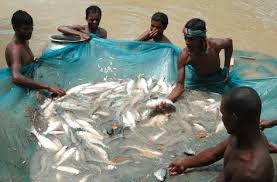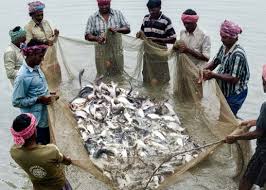The EIA report writing should be concise and limited to significant environmental issues related to fisheries.
Contents of Fisheries EIA Report Writing
The FEIA report should conform to the Federal Ministry of Environment reporting format, which is summarized as follows:
Chapter One – Introduction
Background information, administrative and legal framework, terms of reference, and declaration.
Chapter Two – Project Justification
Project background, project objectives, need for the project, value of the project, envisaged sustainability, alternatives considered (including no project alternative), and development options considered, including site selection.
Chapter Three – Project Description
Type of project, scope, location, material input/output and by-products, waste generation, technical layout and process, operation and maintenance, and project schedule.
Read Also: Feijoas: History, Nutrition, Health Benefits and Growing Guide
Chapter Four – Description of the Biophysical, Socio-Economic, and Health Environment

Study approach, literature review, baseline data acquisition method, geographical location, field data, climatic conditions, air quality, noise level, vegetation cover characteristics, land use and landscape patterns, ecologically sensitive areas, terrestrial fauna and wildlife, soil studies, aquatic studies including hydrobiology and fisheries, groundwater resources, social, economic, and health studies.
This chapter also includes the prediction of changes in baseline conditions without the development in place. It addresses consultation with stakeholders, consultation with regulators, communities, community concerns, and the use of Participatory Rural Appraisal (PRA) methodology.
Chapter Five – Associated and Potential Environmental Impacts
Scoping, impact prediction methodology, impacts of project activities (site clearing, dredging, construction, transportation, excavation, sand filling, etc.), impacts on resource utilization, process impacts (operation), short-term/long-term impacts, reversible/irreversible impacts, cumulative impacts, direct/indirect impacts, adverse/beneficial impacts, risk assessment, social impacts, and health impacts.
Chapter Six – Mitigation Measures and Alternatives
Control technology, compensation, alternative sites, alternative access routes or locations, and compliance with health and safety hazard requirements.
Read Also: Trichomoniasis: Description, Damages Caused, Control and Preventive Measures
Chapter Seven – Environmental Management and Community Development Plans

Guidelines for specific project activities, emergency response procedures, mitigation plans, costing of alternatives and budget requirements, monitoring program (scope, parameters, frequency, location, methodology), auditing and inspection procedures, waste handling procedures, and roles and responsibilities.
In this article, the various steps in which the final Fisheries EIA report can be written have been outlined across the different chapters. The contents and sequence of reporting in each chapter are provided in simple terms. Additionally, it emphasizes that the FEIA report should adhere to the guidelines of the Federal Ministry of Environment or the competent authority for approval.
Do you have any questions, suggestions, or contributions? If so, please feel free to use the comment box below to share your thoughts. We also encourage you to kindly share this information with others who might benefit from it. Since we can’t reach everyone at once, we truly appreciate your help in spreading the word. Thank you so much for your support and for sharing!
Read Also: Top 20 Proven Benefits of Ginger Plant

